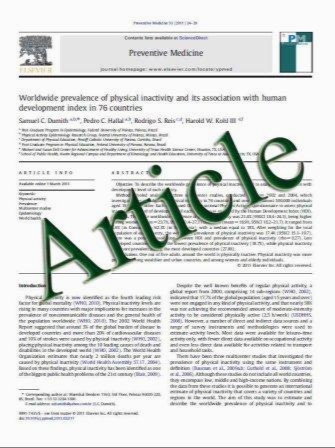Sonographic subclinical entheseal involvement in dialysis patients
- نوع فایل : کتاب
- زبان : انگلیسی
- مؤلف : Marwin Gutierrez & Matthias Zeiler & Emilio Filippucci & Fausto Salaffi & Andrea Becciolini & Chiara Bertolazzi & Mario Chavez & Tania Monteburini & R
- چاپ و سال / کشور: 2011
Description
Long-term dialysis treatment can be associated with several musculoskeletal complications. Entheseal involvement in dialysis patients remains rarely studied as its prevalence is underestimated due to its often asymptomatic presentation. The aims of the study were to determine the prevalence of subclinical enthesopathy in haemodialysis and peritoneal dialysis patients at the lower limb level, to investigate the inter-observer reliability of ultrasound assessment and to analyse the influence of biometric and biochemical parameters. Ultrasound examination was conducted at the entheses of the lower limbs level in 33 asymptomatic dialysis patients and 33 healthy adopting the Glasgow Ultrasound Enthesitis Scoring System (GUESS). The inter-observer reliability was calculated in 15 dialysis patients. Ultrasound found at least one sign of enthesopathy in 165 out of 330 (50%) entheses of dialysis patients. In healthy subjects, signs of enthesopathy were present in 54 out of 330 (16.3%) entheses (p<0.0001). No power Doppler signal was detected in healthy controls, in contrast to four of 330 entheses of dialysis patients. No US signs of soft tissue amyloid deposits were found. The GUESS score was significantly higher in dialysis patients than in controls (p<0.0001). There was no difference in terms of enthesopathy between haemodialysis and peritoneal dialysis. Dialysis duration resulted to be the most important predictor for enthesopathy (p=0.0004), followed by patient age (p=0.02) and body mass index (p=0.035). Parathormone, calcium, phosphorus, C-reactive protein, cholesterol and triglycerides apparently did not play a relevant role in favour of enthesopathy. The inter-observer reliability showed an excellent agreement between sonographers with different degree of experience. Our results demonstrated a higher prevalence of subclinical enthesopathy in both haemodialysis and peritoneal dialysis patients than in healthy subjects. Follow-up will provide further information with respect to the predictive value of US findings for the development of symptomatic dialysis-related arthropathy.
Clin Rheumatol (2011) 30:907–913 Received: 13 November 2010 / Revised: 15 January 2011 / Accepted: 24 January 2011 / Published online: 12 February 2011 # Clinical Rheumatology 2011


